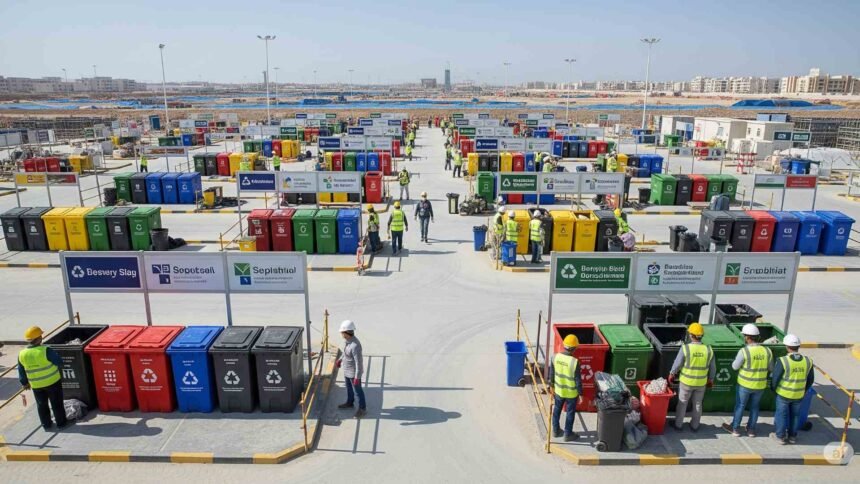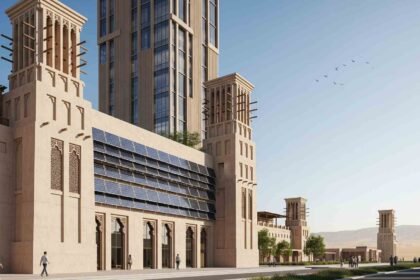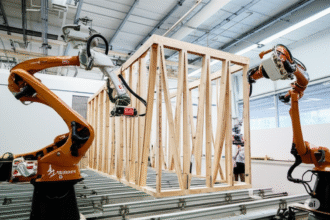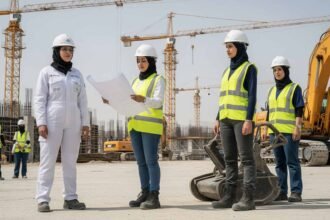In the rapidly developing Gulf region, construction activities are a cornerstone of economic growth, driving urbanization and infrastructure development across countries like the United Arab Emirates (UAE), Saudi Arabia, Qatar, Kuwait, Oman, and Bahrain. However, this surge in construction also generates massive amounts of waste, posing significant environmental, economic, and regulatory challenges. Effective waste management is a necessity for sustainability and a critical factor in achieving cost efficiency and compliance with increasingly stringent regulations.
The Challenge of Construction Waste in the Gulf
The Gulf region’s construction boom has led to unprecedented levels of construction and demolition (C&D) waste. According to various reports, the region generates millions of tons of C&D waste annually, with significant portions ending up in landfills. For instance, in 2007, the UAE alone sent 27.7 million tons of construction waste to landfills, while Dubai generated 35,000 tons daily in the first half of 2008. Similarly, Oman produces 3–5 million tons of construction waste annually, and Kuwait’s landfills, covering 45 km², are expected to expand to 60 km² by 2025. Bahrain’s Asker landfill receives 355,690 tons of waste each year.
Moreover, the Gulf region faces unique challenges, including limited landfill space, high waste generation rates due to rapid urbanization, and the need for standardized waste management practices across diverse countries. Addressing these challenges requires a combination of regulatory frameworks, innovative technologies, and public-private partnerships.
Best Practices in Waste Management
Across the Gulf region, countries have adopted various best practices to manage construction waste effectively. These practices focus on recycling, reusing materials, and exploring alternative uses for waste, while also emphasizing regulatory compliance and public awareness. Below are the key strategies being implemented:
1. Recycling and Reuse of Materials
Recycling and reusing construction materials are at the forefront of waste management efforts in the Gulf. By transforming waste into valuable resources, countries are reducing landfill dependency and conserving natural materials. Specific examples include:
- UAE: The UAE has pioneered innovative uses of waste. For instance, tires are used as fuel for energy generation, and the country has established hazardous waste treatment facilities, such as the one in Jebel Ali, operational since 2002 with an investment of USD 1,000,000. The UAE’s Vision 2020 aims to recycle 75% of municipal solid waste, setting a high benchmark for sustainability.
- Oman: In Oman, construction waste is recycled into cement and bricks. Companies like Be’ah collaborate with institutions such as Sultan Qaboos University to establish reuse centers, promoting a circular economy.
- Kuwait: Kuwait recycles construction waste and resells it. Eco Star, a leading recycling company, processed 3.5 tons of plastic, 10 tons of paper, and 120 tons of metal in 2019, demonstrating the potential for economic benefits from recycling.
- Qatar: Qatar utilizes construction waste in various applications, including concrete buildings, soakaways, crash barriers, concrete beams, parking lots, canal structures, and airport runways. The country also launched a battery recycling initiative in 2019, further diversifying its waste management efforts.
- Bahrain: Bahrain uses construction waste in road construction and as asphalt enhancers. Carbon dust is employed as an alternative fuel in the cement sector, reducing reliance on virgin materials.
These examples highlight how recycling and reuse can transform waste into valuable resources, aligning with global sustainability goals.
2. Waste-to-Energy Initiatives
Waste-to-energy (WTE) projects are gaining traction in the Gulf as a sustainable alternative to landfills. These initiatives convert waste into renewable energy, reducing environmental impact and supporting energy diversification. Notable efforts include:
- UAE: The UAE is developing WTE plants, including a facility in Sharjah with a capacity of 900 tons per day and a cement WTE plant in Abu Dhabi costing 28 million Euros. These projects aim to reduce landfill dependency and generate clean energy.
- Qatar: Qatar’s FIFA World Cup 2022 construction projects emphasized waste management, with detailed reports on recycling and reuse, showcasing the integration of WTE principles in large-scale projects.
WTE initiatives reduce landfill waste and contribute to the region’s renewable energy goals, making them a critical component of sustainable waste management.
3. Regulatory Frameworks and Public-Private Partnerships
Governments across the Gulf are strengthening regulatory frameworks to promote effective waste management. These regulations are often supported by public-private partnerships that enhance infrastructure and scalability. Key examples include:
- UAE: In 2018, the UAE passed a federal law on integrated waste management, the first of its kind in the region, setting a precedent for regulatory reform.
- Saudi Arabia: The Public Investment Fund established a Saudi Recycling Company to support domestic recycling projects, fostering collaboration between the government and private sectors.
- Oman: Oman’s National Solid Waste Management Program, funded by international partners like the EU and Swiss Corporation, aims to restructure waste management at national, regional, and local levels, emphasizing public-private cooperation.
These frameworks ensure compliance with environmental standards and encourage investment in waste management infrastructure.
4. Education and Awareness
Increasing awareness about waste management is essential for long-term sustainability. Educational initiatives engage both industry professionals and the public, fostering a culture of responsible waste handling. For example:
- Oman: Be’ah’s collaboration with Sultan Qaboos University focuses on educating future generations about sustainable practices, creating a pipeline of environmentally conscious professionals.
- Region-Wide Efforts: Public campaigns across the Gulf aim to raise awareness about recycling and proper waste disposal, encouraging construction workers and communities to adopt sustainable practices.
Education and awareness are critical for ensuring that waste management practices are adopted at all levels of society.
Addressing Challenges Through Best Practices
The Gulf region faces several challenges in waste management, but the best practices outlined above offer viable solutions. Key challenges include:
- Landfill Overcapacity: With limited space for landfills, countries like Kuwait and Bahrain are under pressure to reduce waste volumes. Kuwait’s landfills are projected to expand significantly by 2025, while Bahrain’s Asker landfill handles substantial waste annually.
- High Waste Generation: Rapid construction activity leads to high waste generation rates, necessitating efficient waste handling systems.
- Lack of Uniform Standards: Diverse regulatory environments across GCC countries call for harmonized standards to streamline waste management.
To address these challenges, the following solutions are recommended:
- Anaerobic Digestion: Organic waste, which constitutes 35–65% of total waste in the region, can be processed through anaerobic digestion to produce biogas and compost, reducing landfill use.
- Market Development for Recycled Materials: Governments should incentivize the use of recycled aggregates in concrete production, as seen in Egypt, UAE, and Iraq, to create demand for recycled materials.
- Waste as a Resource: Enhancing cement and asphalt production with waste materials, such as carbon dust in Bahrain, can reduce reliance on virgin resources and lower project costs.
These solutions leverage the region’s best practices to address systemic challenges, paving the way for more sustainable construction practices.
Benefits of Effective Waste Management
Implementing these best practices offers numerous benefits for the Gulf region’s construction industry:
- Environmental Sustainability: Reducing landfill waste and promoting recycling conserves natural resources and minimizes pollution, aligning with global sustainability goals.
- Cost Savings: Recycling and reusing materials can lower disposal costs and reduce the need for new raw materials, improving project profitability.
- Regulatory Compliance: Adhering to waste management regulations ensures legal compliance and avoids penalties, enhancing project credibility.
- Economic Opportunities: Waste management creates jobs and stimulates industries like recycling and WTE, contributing to economic growth.
Effective waste management in Gulf construction sites is essential for balancing rapid development with environmental sustainability. By adopting best practices such as recycling, waste-to-energy initiatives, regulatory frameworks, and public awareness campaigns, the region can significantly reduce its environmental footprint while fostering economic growth. Governments, industry stakeholders, and communities must collaborate to invest in infrastructure, education, and innovation, paving the way for a sustainable future in the Gulf’s construction sector.







